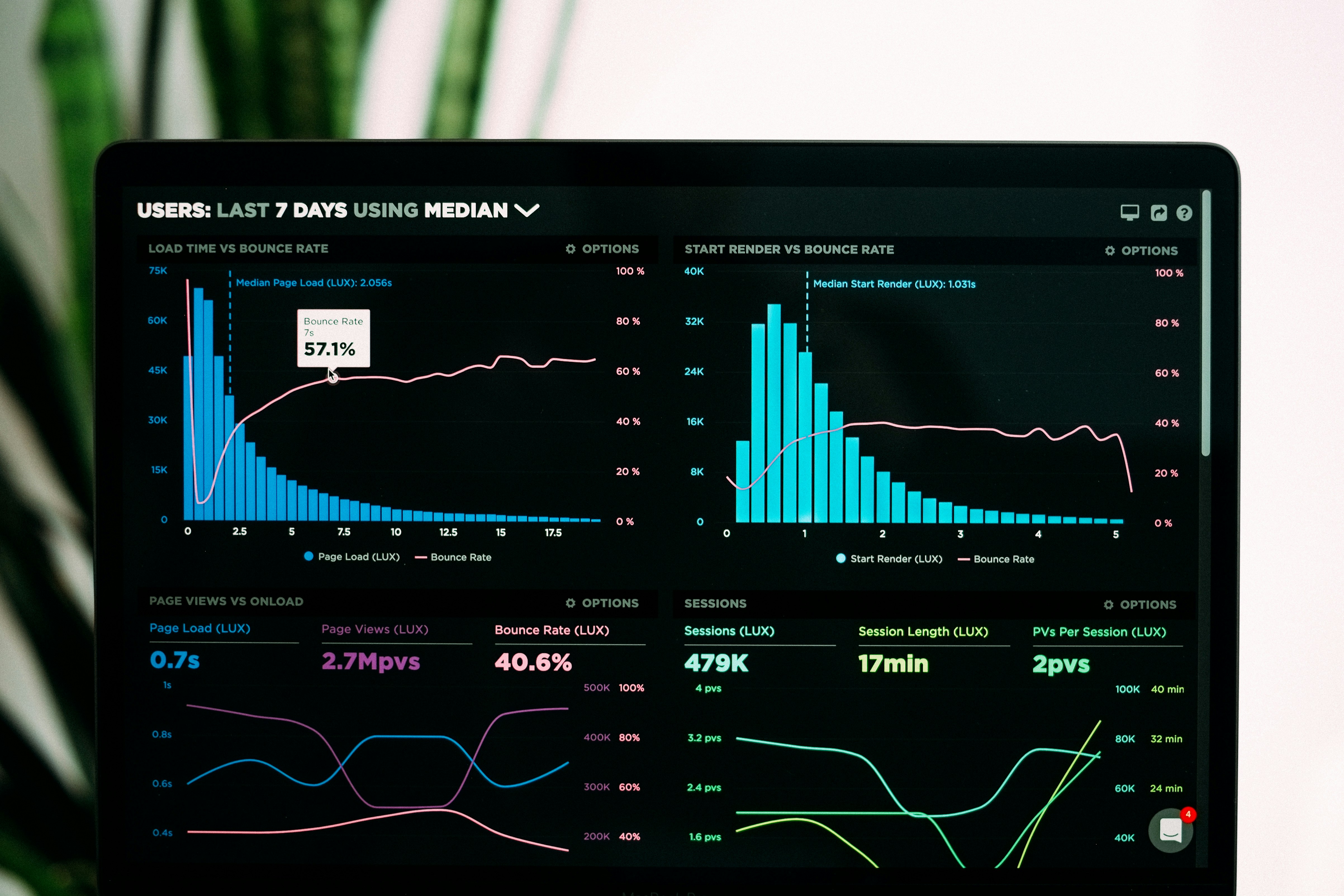
Blog
February 29, 20
Maximizing ROI with Cross-Channel Branding

Blog
February 29, 20
Maximizing ROI with Cross-Channel Branding
Want to get more out of your marketing efforts? Learn how to align your brand across multiple channels to maximize your return on investment and build stronger customer connections.
In today’s world, your customers aren’t just hanging out in one place—they’re bouncing between Instagram, your website, emails, and even TikTok. If you want to maximize your return on investment (ROI), you need a brand strategy that doesn’t just focus on one platform but spans across all of them.
But let’s be real—if each channel looks and feels different, you’re just confusing your audience. Consistent cross-channel branding isn’t just a buzzword; it’s the secret to making your marketing work harder for you.
In this blog, we’ll break down how to create a unified brand presence across multiple platforms so you can boost your ROI while keeping your brand recognizable and cohesive.
1. Consistency Is Key (And We Mean Everywhere)
The first rule of cross-channel branding is to be consistent. If someone follows you on Instagram, visits your website, and opens your email, they should be greeted by the same brand. Consistency builds trust, and trust leads to conversions.
Here’s how to stay consistent:
• Visual Identity: Your logo, colors, fonts, and overall style should be the same across all platforms. Whether it’s a Facebook post or a newsletter, your audience should know it’s you at first glance.
• Brand Voice: Just like with visuals, your tone and language need to be consistent. If your brand is witty on social, don’t get too formal in emails. Keep that same energy everywhere.
• Core Message: No matter the platform, your message should tie back to your brand’s mission and values. Whether it’s a 15-second TikTok or a blog post, make sure it aligns with your brand goals.
Pro Tip: Create a brand style guide that outlines your voice, visuals, and messaging to make it easier for anyone on your team to stay on-brand across platforms.
2. Adapt, Don’t Copy-Paste
While consistency is essential, that doesn’t mean you should copy-paste content across every platform. What works on Instagram might not fly on LinkedIn. The key is to adapt your message to fit the platform while staying true to your brand.
Here’s how to tailor your approach:
• Instagram and Facebook: Focus on visuals and short captions that highlight your brand’s personality.
• LinkedIn: Emphasize professional thought leadership and value-driven content.
• Email Marketing: Personalize your emails to build deeper connections while reinforcing your brand’s core message.
• TikTok and YouTube: Use video to tell your brand’s story in a creative and engaging way.
Pro Tip: Repurpose, don’t recycle. Take the same core message and present it differently on each platform to match the style and tone of that channel.
3. Use Multi-Channel Campaigns for Maximum Impact
Want to see serious results? Run a campaign that spans across multiple channels. Multi-channel campaigns allow you to reinforce your brand’s message while reaching customers in different ways, increasing your chances of engagement.
Here’s how to run a successful cross-channel campaign:
• Unified Theme: Keep a consistent theme and core message, but tailor the format and style to each platform (think videos on TikTok, posts on Instagram, and blogs on your website).
• Coordinate Timing: Make sure the content hits at the same time across platforms. Consistency in timing creates a seamless experience for your audience.
• Track Performance: Use analytics to track which platform is delivering the best results. This will help you optimize future campaigns and focus on the platforms that give you the most bang for your buck.
Pro Tip: Don’t forget about retargeting. By using retargeting ads, you can follow up with people who interacted with your content on one platform and nudge them toward conversion on another.
4. Measure What Matters
To truly maximize your ROI, you need to keep track of how your cross-channel efforts are performing. Measuring metrics across multiple platforms can be tricky, but it’s the only way to know what’s working and where to make adjustments.
Here’s how to measure success:
• Engagement Rates: Keep an eye on likes, shares, and comments across your social media platforms to see which content is resonating.
• Conversion Rates: Track how many people are taking action—whether it’s signing up for a newsletter, making a purchase, or downloading a resource.
• Customer Journey: Look at how users are interacting with your brand across different platforms. Are they engaging with your Instagram, then heading to your website to buy? Knowing their path helps you refine your strategy.
Pro Tip: Use a marketing dashboard that pulls in data from all platforms so you can easily track how each channel is contributing to your overall ROI.
Conclusion: Cross-Channel Branding is the Key to Bigger ROI
Maximizing your ROI isn’t about throwing content at as many platforms as possible—it’s about creating a consistent brand experience across all channels. When your brand shows up the same way on every platform, you build trust, increase recognition, and drive more conversions.
So, stop thinking of each platform as a separate effort. Instead, treat them as part of a unified strategy that works together to make your brand stronger and more profitable.
In today’s world, your customers aren’t just hanging out in one place—they’re bouncing between Instagram, your website, emails, and even TikTok. If you want to maximize your return on investment (ROI), you need a brand strategy that doesn’t just focus on one platform but spans across all of them.
But let’s be real—if each channel looks and feels different, you’re just confusing your audience. Consistent cross-channel branding isn’t just a buzzword; it’s the secret to making your marketing work harder for you.
In this blog, we’ll break down how to create a unified brand presence across multiple platforms so you can boost your ROI while keeping your brand recognizable and cohesive.
1. Consistency Is Key (And We Mean Everywhere)
The first rule of cross-channel branding is to be consistent. If someone follows you on Instagram, visits your website, and opens your email, they should be greeted by the same brand. Consistency builds trust, and trust leads to conversions.
Here’s how to stay consistent:
• Visual Identity: Your logo, colors, fonts, and overall style should be the same across all platforms. Whether it’s a Facebook post or a newsletter, your audience should know it’s you at first glance.
• Brand Voice: Just like with visuals, your tone and language need to be consistent. If your brand is witty on social, don’t get too formal in emails. Keep that same energy everywhere.
• Core Message: No matter the platform, your message should tie back to your brand’s mission and values. Whether it’s a 15-second TikTok or a blog post, make sure it aligns with your brand goals.
Pro Tip: Create a brand style guide that outlines your voice, visuals, and messaging to make it easier for anyone on your team to stay on-brand across platforms.
2. Adapt, Don’t Copy-Paste
While consistency is essential, that doesn’t mean you should copy-paste content across every platform. What works on Instagram might not fly on LinkedIn. The key is to adapt your message to fit the platform while staying true to your brand.
Here’s how to tailor your approach:
• Instagram and Facebook: Focus on visuals and short captions that highlight your brand’s personality.
• LinkedIn: Emphasize professional thought leadership and value-driven content.
• Email Marketing: Personalize your emails to build deeper connections while reinforcing your brand’s core message.
• TikTok and YouTube: Use video to tell your brand’s story in a creative and engaging way.
Pro Tip: Repurpose, don’t recycle. Take the same core message and present it differently on each platform to match the style and tone of that channel.
3. Use Multi-Channel Campaigns for Maximum Impact
Want to see serious results? Run a campaign that spans across multiple channels. Multi-channel campaigns allow you to reinforce your brand’s message while reaching customers in different ways, increasing your chances of engagement.
Here’s how to run a successful cross-channel campaign:
• Unified Theme: Keep a consistent theme and core message, but tailor the format and style to each platform (think videos on TikTok, posts on Instagram, and blogs on your website).
• Coordinate Timing: Make sure the content hits at the same time across platforms. Consistency in timing creates a seamless experience for your audience.
• Track Performance: Use analytics to track which platform is delivering the best results. This will help you optimize future campaigns and focus on the platforms that give you the most bang for your buck.
Pro Tip: Don’t forget about retargeting. By using retargeting ads, you can follow up with people who interacted with your content on one platform and nudge them toward conversion on another.
4. Measure What Matters
To truly maximize your ROI, you need to keep track of how your cross-channel efforts are performing. Measuring metrics across multiple platforms can be tricky, but it’s the only way to know what’s working and where to make adjustments.
Here’s how to measure success:
• Engagement Rates: Keep an eye on likes, shares, and comments across your social media platforms to see which content is resonating.
• Conversion Rates: Track how many people are taking action—whether it’s signing up for a newsletter, making a purchase, or downloading a resource.
• Customer Journey: Look at how users are interacting with your brand across different platforms. Are they engaging with your Instagram, then heading to your website to buy? Knowing their path helps you refine your strategy.
Pro Tip: Use a marketing dashboard that pulls in data from all platforms so you can easily track how each channel is contributing to your overall ROI.
Conclusion: Cross-Channel Branding is the Key to Bigger ROI
Maximizing your ROI isn’t about throwing content at as many platforms as possible—it’s about creating a consistent brand experience across all channels. When your brand shows up the same way on every platform, you build trust, increase recognition, and drive more conversions.
So, stop thinking of each platform as a separate effort. Instead, treat them as part of a unified strategy that works together to make your brand stronger and more profitable.




Join our newsletter
Sign up to get the most recent marketing articles in your email every week!
Want to get more out of your marketing efforts? Learn how to align your brand across multiple channels to maximize your return on investment and build stronger customer connections.
In today’s world, your customers aren’t just hanging out in one place—they’re bouncing between Instagram, your website, emails, and even TikTok. If you want to maximize your return on investment (ROI), you need a brand strategy that doesn’t just focus on one platform but spans across all of them.
But let’s be real—if each channel looks and feels different, you’re just confusing your audience. Consistent cross-channel branding isn’t just a buzzword; it’s the secret to making your marketing work harder for you.
In this blog, we’ll break down how to create a unified brand presence across multiple platforms so you can boost your ROI while keeping your brand recognizable and cohesive.
1. Consistency Is Key (And We Mean Everywhere)
The first rule of cross-channel branding is to be consistent. If someone follows you on Instagram, visits your website, and opens your email, they should be greeted by the same brand. Consistency builds trust, and trust leads to conversions.
Here’s how to stay consistent:
• Visual Identity: Your logo, colors, fonts, and overall style should be the same across all platforms. Whether it’s a Facebook post or a newsletter, your audience should know it’s you at first glance.
• Brand Voice: Just like with visuals, your tone and language need to be consistent. If your brand is witty on social, don’t get too formal in emails. Keep that same energy everywhere.
• Core Message: No matter the platform, your message should tie back to your brand’s mission and values. Whether it’s a 15-second TikTok or a blog post, make sure it aligns with your brand goals.
Pro Tip: Create a brand style guide that outlines your voice, visuals, and messaging to make it easier for anyone on your team to stay on-brand across platforms.
2. Adapt, Don’t Copy-Paste
While consistency is essential, that doesn’t mean you should copy-paste content across every platform. What works on Instagram might not fly on LinkedIn. The key is to adapt your message to fit the platform while staying true to your brand.
Here’s how to tailor your approach:
• Instagram and Facebook: Focus on visuals and short captions that highlight your brand’s personality.
• LinkedIn: Emphasize professional thought leadership and value-driven content.
• Email Marketing: Personalize your emails to build deeper connections while reinforcing your brand’s core message.
• TikTok and YouTube: Use video to tell your brand’s story in a creative and engaging way.
Pro Tip: Repurpose, don’t recycle. Take the same core message and present it differently on each platform to match the style and tone of that channel.
3. Use Multi-Channel Campaigns for Maximum Impact
Want to see serious results? Run a campaign that spans across multiple channels. Multi-channel campaigns allow you to reinforce your brand’s message while reaching customers in different ways, increasing your chances of engagement.
Here’s how to run a successful cross-channel campaign:
• Unified Theme: Keep a consistent theme and core message, but tailor the format and style to each platform (think videos on TikTok, posts on Instagram, and blogs on your website).
• Coordinate Timing: Make sure the content hits at the same time across platforms. Consistency in timing creates a seamless experience for your audience.
• Track Performance: Use analytics to track which platform is delivering the best results. This will help you optimize future campaigns and focus on the platforms that give you the most bang for your buck.
Pro Tip: Don’t forget about retargeting. By using retargeting ads, you can follow up with people who interacted with your content on one platform and nudge them toward conversion on another.
4. Measure What Matters
To truly maximize your ROI, you need to keep track of how your cross-channel efforts are performing. Measuring metrics across multiple platforms can be tricky, but it’s the only way to know what’s working and where to make adjustments.
Here’s how to measure success:
• Engagement Rates: Keep an eye on likes, shares, and comments across your social media platforms to see which content is resonating.
• Conversion Rates: Track how many people are taking action—whether it’s signing up for a newsletter, making a purchase, or downloading a resource.
• Customer Journey: Look at how users are interacting with your brand across different platforms. Are they engaging with your Instagram, then heading to your website to buy? Knowing their path helps you refine your strategy.
Pro Tip: Use a marketing dashboard that pulls in data from all platforms so you can easily track how each channel is contributing to your overall ROI.
Conclusion: Cross-Channel Branding is the Key to Bigger ROI
Maximizing your ROI isn’t about throwing content at as many platforms as possible—it’s about creating a consistent brand experience across all channels. When your brand shows up the same way on every platform, you build trust, increase recognition, and drive more conversions.
So, stop thinking of each platform as a separate effort. Instead, treat them as part of a unified strategy that works together to make your brand stronger and more profitable.




Join our newsletter
Sign up to get the most recent marketing articles in your email every week!
Other Blogs
Other Blogs
Check our other project Blogs with useful insight and information for your businesses
Other Blogs
Other Blogs
Check our other project Blogs with useful insight and information for your businesses
Other Blogs
Other Blogs
Check our other project Blogs with useful insight and information for your businesses


